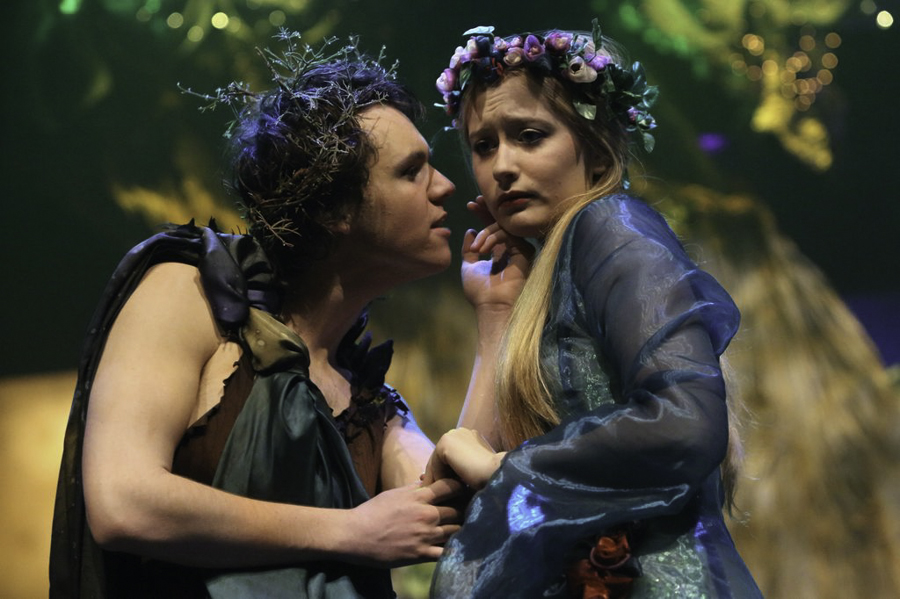A truly special kind of talent is necessary to portray Shakespeare’s winsome dialogues. His plays are interpreted in a variety of ways: feminist, Marxist, and psychoanalytic (particularly, Hamlet) productions abound. These all, in some way or another, sacrifice some original Shakespearean elements for the sake of an ideological message. Despite the risk involved in deviating from Shakespeare’s original work, the McGill English Department’s production of A Midsummer Night’s Dream remains true to the spirit of the text, despite the looseness of director professor Sean Carney’s interpretation.
There is a striking scene from a Marx Brothers movie in which Groucho is trying to fit all his stuff into his luggage. Sitting on the suitcase with his clothes hanging off the lip of the trunk, he realizes that he will never be able to close the zipper, so he takes a pair of scissors to the material, managing to fit everything in. Ultimately, this cutting and refashioning is what an ideological production does to Shakespeare. In the original text of A Midsummer Night’s Dream, four Athenian youths are involved in a complicated love quadrangle, manipulated by the fairies of the forest in which the play is mostly set. Carney has switched the genders of all four main characters except one, a daring move, especially considering the gender-based comedy of the original. If a woman speaks what were originally a man’s lines, the director’s decisions must be carefully executed by a meticulous cast. Carney’s team pulls it off with composed elegance, managing not only to remain faithful to the phantasmagoric confusion of the original, but also eking new meaning and fresh comedic twists.
The play was staged as the culmination of Carney’s Theatre Laboratory course, and the year-long preparation on the part of the cast, crew, and designers shows through in this well-executed performance. Actors who do not know how to move can eclipse a performance’s stronger aspects, making for a production that seems sophomoric and clunky. The actor’s first instrument is not their voice, but their body. In this respect, and in many others, this production was quite impressive. The cast moves in a beautifully intentional way, with actors managing the gracelessness of eager play-actor Nick Bottom, the elegance of fairy queen Titania, or the wild ferocity of king Oberon with the same fluent control.
The set and costumes of A Midsummer Night’s Dream are also noteworthy. Though minimalist theatre has its own appeal, there is something almost liturgically rich about an extravagant production. The audience is sure to be taken in by the lush quality of A Midsummer Night’s Dream: the costumes tailored to convey specific meaning; the perfectly designed light of dawn in the last act; the clear sound of clashing metal swords. These are details that, poorly managed, can distract from a play’s central storyline. Carney and his production team avoid this pitfall, using set and costume elements to shape the audience’s understanding of the materiality present both in the original spirit of the text, as well as in Carney’s own interpretation.
The cast and crew manage every detail minutely and creatively. McGill productions can often be harried by chaotic schedules, changes in personnel and equipment, and a limited rehearsal period. A Midsummer’s Night Dream benefits from careful planning and well-executed ideas, making for a consummate production. Every element has been carefully weighed and measured, and put in its proper place. Though the play might surprise the rare Shakespeare purist – behold disco dancing and gender-bending quips – this performance evidences the fact that the best way to be faithful to the Bard’s legacy is to take a risk and shake things up.
A Midsummer Night’s Dream will run April 11 to 13 at 7:30 p.m at Moyse Hall. Admission is $10.
